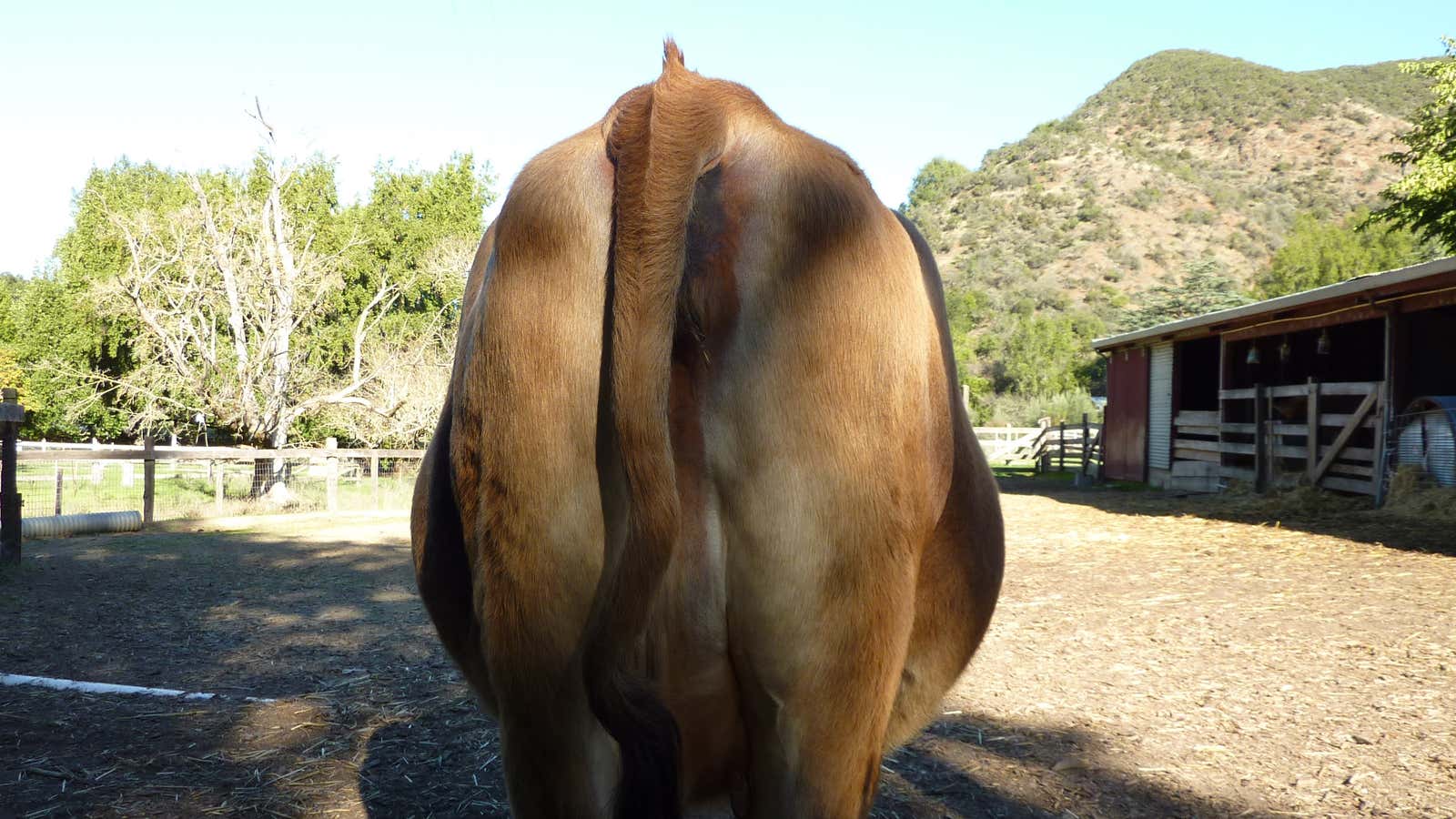To cut down on greenhouse gases, the US needs to start canning the crap.
In a speech on March 28, president Barack Obama announced the National Biogas Roadmap, part of a broader Climate Action Plan that the president debuted last June. The key part of the biogas roadmap is to help slaughterhouses, dairies, and ranches to install biogas digesters—systems that use anaerobic (non-oxygen breathing) bacteria to break down organic waste (video).
As they eat, the bacteria purge the waste of toxins that would otherwise seep into groundwater, and as a by-product, they burp up methane. The system captures that methane, which is clean-burning. It can be used on-site as natural gas, or pumped into generators to convert it into electricity. That also means the dung doesn’t lie around releasing methane—a greenhouse gas far more potent, albeit shorter-lived, than carbon dioxide—into the air.
The program’s goal is to cut methane emissions from dairy producers by one-quarter by 2020, but environmentalists doubt it will happen voluntarily. “Clean energy, value-added manure, jobs, it all sounds good,” Thomas Hertel, who researches climate and agriculture at Purdue University in Indiana, told the Wall Street Journal. “But reducing gas emissions by 25% by 2020 seems like it will require more than letting the industry know there’s an opportunity out there.” Hertel didn’t offer any suggestions about new regulations.
In any case, the dairy industry contributes only about 9% of the US’s methane emissions. About 30% comes from the energy industry, where emissions are expected to increase as pipelines get older and the fracking boom continues. A study last month (pdf) from the Environmental Defense Fund, a lobbying group, argued the oil and gas industry could cut 40% of its emissions with existing technology that scrubs methane or prevents leaks. Not surprisingly, the industry is resistant to any new regulations.
Still, even the 20% drop that the White House’s biogas roadmap could produce is better than nothing, and the capture of clean-burning methane to use as fuel helps by reducing other carbon emissions. It’s estimated that a busy biogas plant, like the ones that meat processor Cargill uses at three of its US slaughterhouses, produce enough methane to power 3,000 houses a year.
Over 2,000 dairies, slaughterhouses, and wastewater treatment plants already use biogas digesters (the technology is over a century old). Some cities are even putting in digester systems to deal with their food waste. Patrick Serfass, head of the American Biogas Council, has identified at least 12,000 existing agricultural, landfill, and wastewater sites with potential for future digesters.
Until the final biogas road map comes out later this summer, there’s no telling how many of these potential sites will be developed, let alone how much energy they’ll produce. However, with the industry producing 40 million tons (36 million tonnes) of beef and 21 billion gallons (95 billion liters) of milk every year, America’s cows have got plenty of fuel for those who want it.
